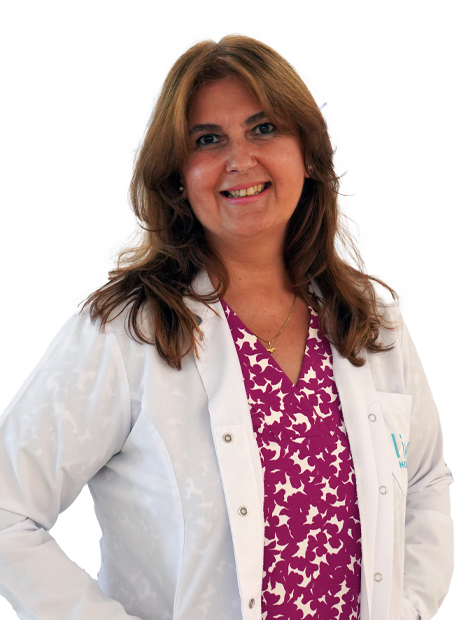Copd Complaints Regress With This 2-Hour Procedure
Chronic Obstructive Pulmonary Disease (COPD) is disease that obstruct airways and makes breathing difficult.
Generally, based on the extent of chronic bronchitis and emphysema, patients with COPD can have varying symptoms from coughing and phlegm to shortness of breath even after a short walk. Globally fourth, nationally third most common cause of death, COPD continues to progress and treatments are usually insufficient due to lack of timely diagnosis. The most important cause of the disease is smoking. Quitting smoking is the single and most effective precaution that decreases the risk and stops the disease progression. Regular medication and newly developed bronchoscopic methods form the other parts of the treatment process.

Evaluation and follow-up of the disease
Decreasing the risk factors
Stable COPD treatment with pharmaceutical and non-pharmaceutical approaches
The treatment of acute exacerbations characterized by short-term worsening of the COPD symptoms.
Stable COPD treatment includes bronchodilator drug use for complaints and annual flu vaccination. And non-pharmaceutical therapies involve respiratory rehabilitation, oxygen therapy and, for limited eligible cases, procedures like bronchoscopic placement and balloon dilation (a bronchoscopic mechanical treatment).

Generally, based on the extent of chronic bronchitis and emphysema, patients with COPD can have varying symptoms from coughing and phlegm to shortness of breath even after a short walk. Globally fourth, nationally third most common cause of death, COPD continues to progress and treatments are usually insufficient due to lack of timely diagnosis. The most important cause of the disease is smoking. Quitting smoking is the single and most effective precaution that decreases the risk and stops the disease progression. Regular medication and newly developed bronchoscopic methods form the other parts of the treatment process.
What causes COPD?
Over the years, the structure of the bronchi and alveoli start to deteriorate as the alveoli are filled with cigarette smoke and toxic gases. As a result, bronchitis develops due to diseased and obstructed bronchi, and emphysema occurs due to the destruction of alveoli. As a result of these blockages and deteriorations in the lungs, oxygen transfer to the blood decreases and many serious diseases arise with the lack of oxygen in the body.How COPD is diagnosed?
COPD is diagnosed with respiratory function test performed for patients with coughing, phlegm and shortness of breath and the severity of the disease determined.What are the stages of COPD?
COPD is evaluated in 4 stages: mild, moderate, severe and extremely severe. Cardiac insufficiency may develop in extremely severe cases and edema starts in feet. In patients with cardiac insufficiency, shortness of breath becomes so severe in the later stages of the disease that patients become unable to leave the house. Patients at this stage use oxygen device for more than half the day.How it is treated?
An effective treatment plan consists four steps.Evaluation and follow-up of the disease
Decreasing the risk factors
Stable COPD treatment with pharmaceutical and non-pharmaceutical approaches
The treatment of acute exacerbations characterized by short-term worsening of the COPD symptoms.
Stable COPD treatment includes bronchodilator drug use for complaints and annual flu vaccination. And non-pharmaceutical therapies involve respiratory rehabilitation, oxygen therapy and, for limited eligible cases, procedures like bronchoscopic placement and balloon dilation (a bronchoscopic mechanical treatment).
What is balloon method?
Balloon method is beneficial for COPD patients with chronic bronchitis component. Obstructed bronchi are dilated with a balloon that is rhythmically inflated by a pump. This balloon opens the bronchi and allows for the development of healthy cells by destroying the mucus or phlegm-secreting defect cells. The mucus generated by the destruction of the cells is removed during bronchoscopy. Each lung lobe and segment is individually and mechanically cleaned with the balloon, enabling a significant expansion in bronchus diameter and preventing phlegm production. Shortness of breath is also treated by opening the bronchi.How long is the treatment period?
The procedure is performed under operating room condition within 2 hours.What does balloon method provide for the patients?
Lung function tests of the patients improve after the procedure. Bronchus diameter is significantly increased and phlegm production is prevented. Shortness of breath is also treated as the bronchi are opened. Exercise tolerance also improves and 6-minute walking test distance increases. Symptomatic scoring of the shortness of breath decreases.
* Liv Hospital Editorial Board has contributed to the publication of this content .
* Contents of this page is for informational purposes only. Please consult your doctor for diagnosis and treatment. The content of this page does not include information on medicinal health care at Liv Hospital .
* Contents of this page is for informational purposes only. Please consult your doctor for diagnosis and treatment. The content of this page does not include information on medicinal health care at Liv Hospital .
Ask Our Experts
All Hospitals

Version History
Current Version
Copied URL!






